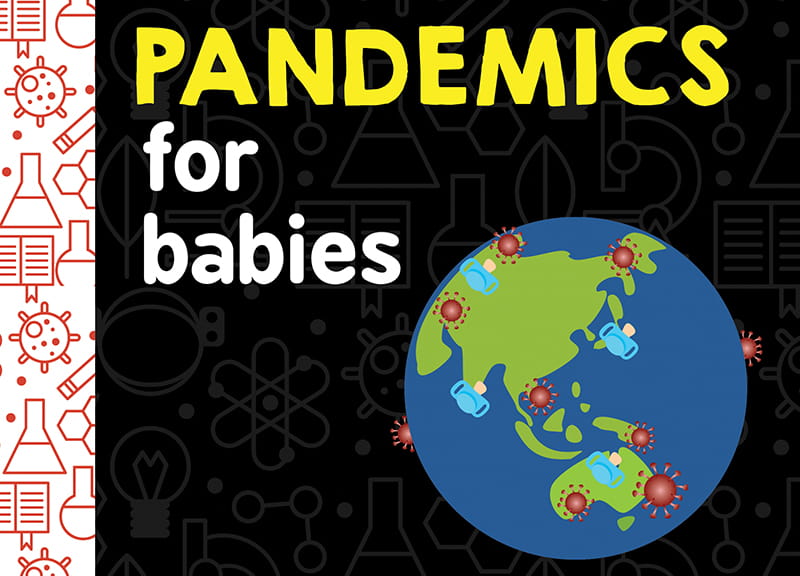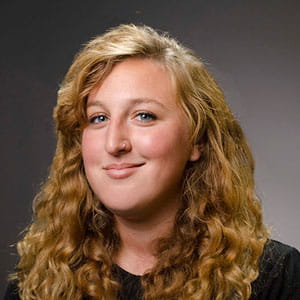They Wrote the Book on ‘Pandemics for Babies’

Explaining and understanding the COVID-19 pandemic can be difficult for a variety of reasons. Explaining it so it can be understood by children can be even harder.
Drexel University alumni Neal D. Goldstein, PhD, and Joanna S. Suder, JD, know this firsthand, both as public health experts and as parents. He’s an assistant research professor of epidemiology at Drexel’s Dornsife School of Public Health, and his specialty is infectious disease epidemiology. She’s a deputy attorney general in the Civil Division of the Delaware Department of Justice, representing the Division of Public Health for the state of Delaware while working on infectious disease from a legal perspective. Together, they’re parents to their three-year-old son.
Using their personal and professional expertise, Goldstein and Suder have written two books with author Chris Ferrie, who is well known for his “Baby University” series explaining advanced scientific concepts for young children. The first, “Pandemics for Babies,” will be out Oct. 27 (the e-book was released Oct. 6). The second, “Germ Theory for Babies,” will be out in February 2021.
“With Joanna’s expertise in responding to the pandemic from the public health perspective, and then for me on the epidemiology side knowing how the pieces of the puzzle fit together, we were able to write to make those connections easier,” said Goldstein.
“A lot of our writing style for these books is from how we explain it to our son as well, because we have to distill these scary, life-changing events down for him,” Suder added. “Plus we read a lot to him, and Chris Ferrie was one of our favorite children’s book authors even before we co-authored these books with him, because he writes a lot of science books that deal with complex topics and that’s something that we like to read to our son.”

If the timing of the books’ publications seems fortuitous, it’s because Goldstein and Suder knew to start writing them well before the COVID-19 pandemic hit the United States in early March. They came up with the idea at the end of January — at a time when, as public health experts, they were closely following news about the novel coronavirus in China. They submitted a proposal to the publisher, Sourcebooks, shortly after. It was accepted in February. They signed a contract in March. The drafts were largely written by April, along with the illustrations done by Ferrie.
“The timing was perfect, because I think if we had done this last year, I don’t know that people were as aware of what public health does, or certainly they didn’t know what an epidemiologist does,” said Goldstein. “Most people hear ‘epidemiologist’ and think I’m a skin doctor.”
The two found time to work on the book at the height of the pandemic in the Northeast, in March and April, at a fraught time when their workplaces and childcare situations completely changed along with practically everything else. Suder was slammed, working 10- or 12-hour days every day, including weekends, to help coordinate Delaware’s COVID-19 response, and Goldstein had to transition to remote teaching very quickly.
“She’s trying to respond to urgent public health matters and then there’s me asking her if she can take a look at this revision because we only had a little sliver of a window every day to work with Chris, who lives in Australia,” joked Goldstein.
The hard work paid off. They hope that parents will appreciate the books, and that children can learn from them.
“I think these books fill a gap, and it’s rewarding to have helped create something that might help parents better explain these challenging times,” Suder said.

Carefully written to explain concepts without stigmatizing any individuals or groups, each book includes steps that children can take after reading, like washing their hands and wearing a mask. Plus, the books end on positive messages, and use colorful illustrations to provide visuals to complex, heavy topics.
“We try, and I think the illustrations really help, to convey a lot of this message with having positivity,” said Goldstein. “I think it will make kids respond to this book to see colorful illustrations rather than really somber ones, because we’re writing about people getting sick and dying. The positive imagery goes a long way.”
This isn’t the first time that Goldstein and Suder have worked together. They’ve co-authored scientific papers about other public health topics where law intersects with epidemiology, including childhood vaccination, COVID-19 policy responses and marijuana decriminalization, in addition to writing their own individual scientific and law review papers. Goldstein has also written an academic textbook on epidemiological analysis from medical records. And beyond the overlap in their professional and personal lives, both Goldstein and Suder are Drexel alums. It’s where he got his PhD and she got her JD; she credits her love of health law to Robert Field, JD, who holds dual appointments as professor in Drexel’s Kline School of Law and the Dornsife School of Public Health, where Goldstein now works.
They both agree that this new kind of writing experience was a fun challenge and will help them better explain complex topics intuitively to broader audiences. For Goldstein, it’s his students. For Suder, it’s her clients.
“As a lawyer, I work every day with non-legal clients, and they have public health expertise and medical expertise, but it’s my job to take legal concepts and distill them down because they’re not legally trained,” explained Suder.
Plus, they’re already looking ahead to create more children’s books about public health — ones that could also be read to their son.
“I’m actually really excited to get the books and be able to read them to him,” said Suder. “He does not care one bit that we have written these books, but I think he might like them once he sees them.”
Drexel News is produced by
University Marketing and Communications.

